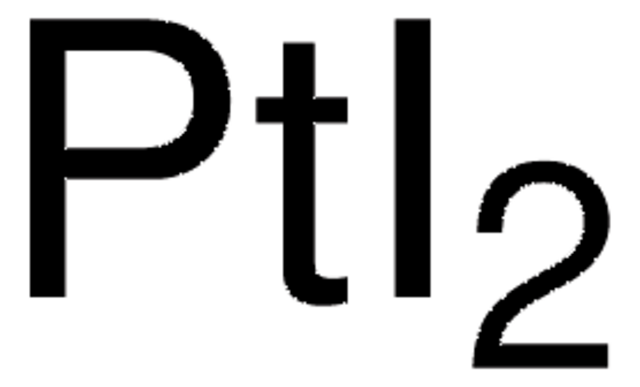Kluczowe dokumenty
206113
Platinum(IV) chloride
96%
Synonim(y):
Platinum tetrachloride
Wybierz wielkość
315,00 zł
Wybierz wielkość
About This Item
315,00 zł
Polecane produkty
Poziom jakości
Próba
96%
Formularz
powder and chunks
przydatność reakcji
reagent type: catalyst
core: platinum
mp
370 °C (dec.) (lit.)
gęstość
4.303 g/mL at 25 °C (lit.)
ciąg SMILES
Cl[Pt](Cl)(Cl)Cl
InChI
1S/4ClH.Pt/h4*1H;/q;;;;+4/p-4
Klucz InChI
FBEIPJNQGITEBL-UHFFFAOYSA-J
Szukasz podobnych produktów? Odwiedź Przewodnik dotyczący porównywania produktów
Zastosowanie
Due to its high affinity to the glycosyl acceptor hydroxy groups and bidentate ligation capacity, it can be used as a dual catalyst for regio- and stereoselective glycosidation reactions.
It can also be used for the photosensitization and surface modification of TiO2 for the photodegradation of 4-chlorophenol.
Hasło ostrzegawcze
Danger
Zwroty wskazujące rodzaj zagrożenia
Zwroty wskazujące środki ostrożności
Klasyfikacja zagrożeń
Acute Tox. 3 Oral - Eye Dam. 1 - Resp. Sens. 1 - Skin Corr. 1B - Skin Sens. 1
Kod klasy składowania
6.1A - Combustible acute toxic Cat. 1 and 2 / very toxic hazardous materials
Klasa zagrożenia wodnego (WGK)
WGK 2
Temperatura zapłonu (°F)
Not applicable
Temperatura zapłonu (°C)
Not applicable
Środki ochrony indywidualnej
Eyeshields, Faceshields, Gloves, type P3 (EN 143) respirator cartridges
Wybierz jedną z najnowszych wersji:
Masz już ten produkt?
Dokumenty związane z niedawno zakupionymi produktami zostały zamieszczone w Bibliotece dokumentów.
Klienci oglądali również te produkty
Active Filters
Nasz zespół naukowców ma doświadczenie we wszystkich obszarach badań, w tym w naukach przyrodniczych, materiałoznawstwie, syntezie chemicznej, chromatografii, analityce i wielu innych dziedzinach.
Skontaktuj się z zespołem ds. pomocy technicznej















